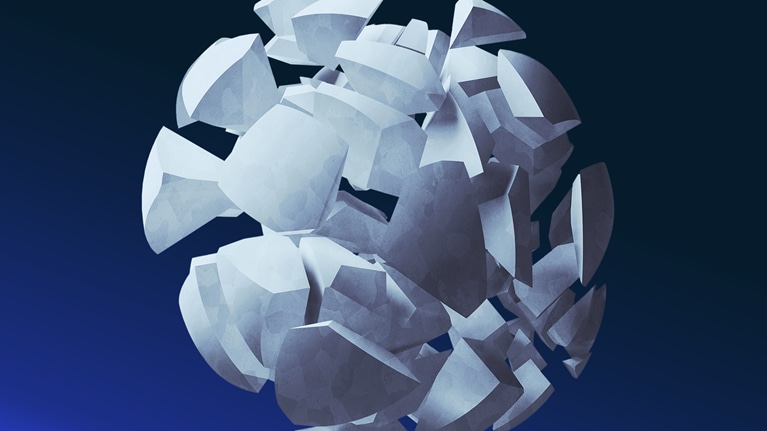For many Australian communities, 2020 was a profound experience: bushfires, a global pandemic, and waves of activism all forced changes on our society that disrupted habits and fundamentally challenged assumptions that had previously dictated the rhythms of everyday life. Our hope for a swift return to normalcy needs to be considered in tandem with the fact that many Australians have altered longstanding mindsets and behaviours—and, as consumers, we have changed our purchasing patterns to prioritise new personal values.
Over the past year, McKinsey has provided a series of insights in which we sourced and interpreted real-time data on the impact of these changes for Australian consumer businesses. But behind the data are people—and in a period of increased microsegmentation, we believe understanding the experiences of those people is critical for businesses looking to approach recovery with the nuance that emerging customer behaviours will require.
Toward the end of 2020, we spent time with 12 Australian families to understand how COVID-19 was impacting their lives. Here are some of their insights.

Living short term: One response to continued uncertainty
Despite signs of increased optimism, Australians are not confident in a return to their previous ‘normal.’ Economic uncertainty (which continues to outrank public health as the primary concern for Australians) and ongoing shifts in restrictions have forced Australians to adopt new cycles of both planning and dreaming. Daily and weekly planning cycles have become the main focus, while monthly (or beyond) cycles remain within the purview of aspiration only. Yearly cycles are nearly gone. The implications of this shift mean a lower likelihood of making impulsive choices today that bank on the expectation of a future benefit (for example, a pay rise, vacation, or new job). Instead, people are focusing their decision making on how it impacts the short term while maximising options for an uncertain future. The last thing anybody wants is to be underprepared for whatever may come next. These changes to mindsets have developed over the course of a year and will continue to affect behaviour for months, if not years, to come.
Active resetting of lifestyles and habits
At the start of 2020, many of us relied on the pace of our lifestyles to stimulate and excite us. Life had become habitual but frenetic.
By the middle of 2020, we were forced out of our routines (some more than others) in a way that made us reconsider that freneticism and the physical and emotional toll that it was taking: We migrated to online shopping; we reappraised reliable and sustainable brands and reconsidered fast fashion; we actively chose to support local businesses; we learned and worked remotely; we discovered what we were comfortable going without; we created connections with people in new ways; and we didn’t spend holidays running from place to place. Despite all of these changes, we found that life can still be fulfilling and, in some cases, even improved.
Heading into 2021, these shifting norms influence a wider set of decisions, as some Australians realise that life as they knew it is not their only path—nor even their preferred one. Experiencing life in a smaller radius, without the previous distractions, has given people the opportunity to take a step back and think about how they will choose to live going forward.
Becoming more mindful of need versus want
The pandemic forced new levels of mindfulness on routine aspects of life. Early in 2020, everyday activities such as grocery shopping required thoughtful preparation to avoid added risk and to get what was needed from sparse shelves. Now, a year later, this mindful behaviour has spread to other aspects of life.
The extent to which this more strategic mindset will continue in consumer behaviour appears linked to how deeply COVID-19 has impacted individual lives this year. Looking across consumers, we’ve identified two key factors that are linked to lasting behavioural shifts: how much their (actual) livelihoods were impacted and how much their (perceived) lifestyles were impacted. For some, a shift was driven by a loss of income (current or expected). For others, staying home showed them the positive impact of savings, paying down debt, or spending money on things that matter to them.
While an altered income determines many behaviour shifts, impact to freedom affects the intensity of those shifts. Those who experienced extended lockdowns or lost access to important activities for long periods found their behaviours and mindsets shifted more significantly than those who didn’t feel the consequences of the pandemic as pointedly.
Regardless of the catalyst, people have survived—and even thrived—living without many of the things they would have previously called vital to their happiness, such as restaurants, entertainment events, or travel. While the personal-value equation is different for everyone, this equation has changed for almost everyone in the past year.
What is the implication for Australian businesses?
Our insights have already looked at segmental impacts from 2020. But what all of these stories highlight is that, within those segments, the experiences of this year have been unique and deeply personal to the individual.
At the highest level, as we showed in our last article, there are four large segments centred around two key factors: how challenging 2020 was on people’s economic situations and how it affected the way they lived their lives. For this event, the distribution of behavioural impact does not run along lines of traditional demographic segmentation; people of all ages, genders, ethnicities, and family structures felt the effects of COVID-19. The factors that drove your segmentation in the past may not be the right ones to drive your future.
There are layers underneath the headline figures, and as a consumer-facing business, you need—now more than ever—to understand what has changed in your customers’ mindsets. This will affect marketing and branding, go-to-market strategies, growth strategies, and product development. These vignettes from our 12 Australian families tell us that the realities are, unsurprisingly, much more nuanced. 2020 was traumatic, even if the injury was not lasting for many—and trauma inevitably changes individuals in a variety of ways over time.
The future remains uncertain. The ground is still shifting and has yet to settle back into a new form. There are early signs that suggest some aspects of life will return to normal, while other trends may last or continue to change for years to come:
- Mindful and savvy consumers. More people will see their livelihoods change in unexpected ways. These shocks to people’s senses of security are showing up as shifts in mindsets, not just survival behaviours, which could lead to a cohort of more financially mindful and savvy consumers.
- Restructured priorities. Several profound shifts—realising what matters, appreciating the simple things, and investing in making them more central to life—do not appear flights of fancy. Whether it’s spending more time with family, nesting at home, or self-care, these new priorities will likely take time to change again.
- Digital adoption. Pandemic restrictions forced many people who were averse to a shift to digital to make the change. While there are signs that some people may return to physical channels, exposure and positive experience were enough to make digital the preferred channel for an increasing number of people and occasions. While we believe that digital adoption will normalise, signs indicate that usage will remain higher than it was before COVID-19.
- Travel rush. While many cities are once again allowing increasingly large gatherings, there’s a continuously growing eagerness for a return to normalcy—exemplified, for many, by travel. Whether driven by a desire to see family abroad or simply to feel unstuck in the world, travel is top of mind for many who are primed at the gate to get overseas.
One thing is clear: your approach to understanding your customers needs a fresh look. Differences in experience—and how people internalised those experiences—will determine the lasting changes going forward. Uncovering those means looking at your customers through different lenses and staying one step ahead to meet their emerging needs. Now is the time to embody the words of computing pioneer Alan Kay: ‘The best way to predict the future is to invent it.’


